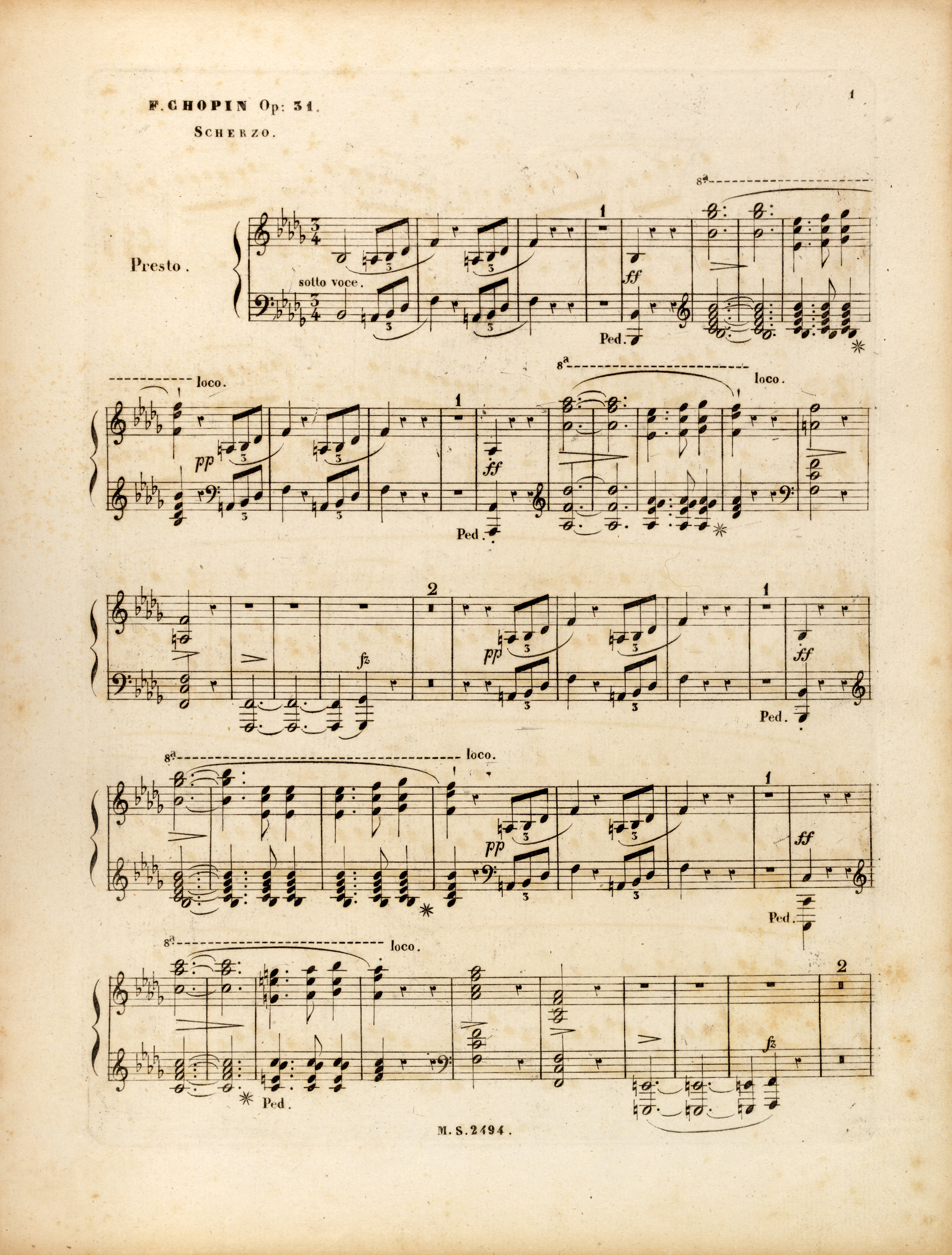




|
||

|
Staccato dot in bar 41 in EE |
|

|
4 wedges suggested by the editors |
|

|
4 dots, our alternative suggestion |
In b. 9, 17, 33 and 41 and in further repetitions of that theme, separate staccato markings for the L.H. chords are present only in EE in b. 41 (dot), in EE3 in b. 141 (dot) and in FE (→EE) in b. 165 (wedge). It is only the latter that could have come from Chopin; however, it is uncertain and it absolutely does not entitle us to add markings in all 12 places. In spite of that, this is the addition we suggest in the main text: we repeat wedges or dots after the R.H. part. The aim is to avoid doubts that could arise due to the notation on separate staves, which could create the illusion of the parts of both hands being independent. It is a different solution to the one adopted for the slurs, which stems from a richer meaning of slurs: while their structural meaning (distinguishing a motif) concerns both hands, the legato articulation they suggest may be applied only to the R.H. part, which implements the melodic line.
Compare the passage in the sources »
category imprint: Differences between sources; Editorial revisions
issues: EE revisions
notation: Articulation, Accents, Hairpins

